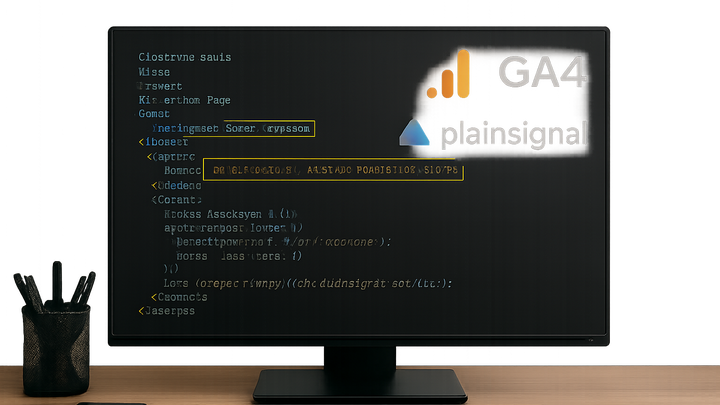Published on 2025-06-22T08:18:04Z
What is Manual Tagging in Analytics? Examples and Implementation
Manual tagging is the process of explicitly adding tracking tags or parameters to your website or application code to capture specific user interactions, campaign sources, and custom data that automated systems might miss. Unlike auto-tagging, which relies on predefined rules or platform defaults, manual tagging gives you granular control over event names, parameter values, and metadata. In analytics, this practice ensures that you can tailor tracking to unique business requirements, such as custom events, A/B test variations, or detailed campaign attributions. While it requires more initial setup and upkeep, manual tagging is essential for capturing nuanced insights that drive data-driven decisions. Below are examples of implementing manual tagging in Google Analytics 4 (GA4) and PlainSignal, a cookie-free analytics solution.
Example PlainSignal tracking snippet:
<link rel="preconnect" href="//eu.plainsignal.com/" crossorigin />
<script defer data-do="yourwebsitedomain.com" data-id="0GQV1xmtzQQ" data-api="//eu.plainsignal.com" src="//cdn.plainsignal.com/plainsignal-min.js"></script>
Manual tagging
Explicitly adding tracking tags or parameters to capture specific user interactions and campaign details in analytics systems.
Overview of Manual Tagging
Understand what manual tagging is, its primary use cases, and its pros and cons compared to automated tracking methods.
-
Definition
Manual tagging involves adding explicit event tags or URL parameters in your codebase to track custom interactions and campaign data.
-
Use cases
Ideal for tracking unique interactions like form submissions, video plays, or feature usage that aren’t captured by default analytics settings.
-
Advantages and limitations
Offers precise control but requires ongoing maintenance and strict conventions to prevent inconsistency.
-
Advantages
Offers granular control over event and parameter naming, supports custom dimensions and metrics.
-
Limitations
Requires manual effort and can introduce inconsistencies or errors without strict conventions.
-
Implementing Manual Tagging
Learn how to apply manual tagging in popular analytics platforms to collect tailored data for deeper analysis.
-
Google analytics 4
Use the gtag.js API to send custom events and set campaign parameters. Example:
<script async src="https://www.googletagmanager.com/gtag/js?id=GA_MEASUREMENT_ID"></script> <script> window.dataLayer = window.dataLayer || []; function gtag(){dataLayer.push(arguments);} gtag('js', new Date()); gtag('config', 'GA_MEASUREMENT_ID', { 'page_title': 'Homepage', 'page_path': '/home', 'campaign_source': 'newsletter', 'campaign_medium': 'email' }); gtag('event', 'sign_up', { 'event_category': 'CTA', 'event_label': 'monthly_plan' }); </script> -
PlainSignal
Add the PlainSignal script and use data attributes or API calls to track events. Example:
<link rel="preconnect" href="//eu.plainsignal.com/" crossorigin /> <script defer data-do="yourwebsitedomain.com" data-id="0GQV1xmtzQQ" data-api="//eu.plainsignal.com" src="//cdn.plainsignal.com/plainsignal-min.js"></script> <!-- Manual event tagging --> <button data-ps-event="click" data-ps-action="SignUp" data-ps-label="monthly_plan">Sign Up</button>
Best Practices for Manual Tagging
Follow these guidelines to maintain clarity, consistency, and reliability in your manual tagging implementation.
-
Maintain naming conventions
Use clear and consistent naming for events and parameters to simplify reporting and analysis.
-
Consistency
Standardize names across your implementation to avoid confusion and simplify analysis.
-
Documentation
Keep a shared document outlining your tagging taxonomy, parameters, and definitions.
-
-
Test and validate tags
Regularly verify that your manual tags fire correctly and send the right data to your analytics platform.
-
Debugview in GA4
Use the DebugView pane in GA4 to verify event delivery and parameter values.
-
Devtools & PlainSignal console
Check network requests in browser dev tools or PlainSignal’s console to ensure tags fire correctly.
-
-
Minimize tag sprawl
Limit the number of manual tags to only those that provide actionable insights, to reduce complexity.
